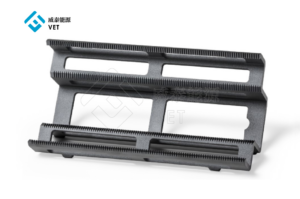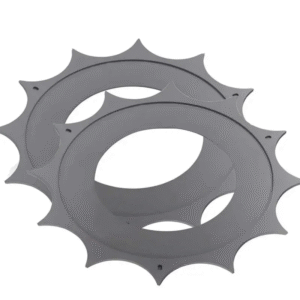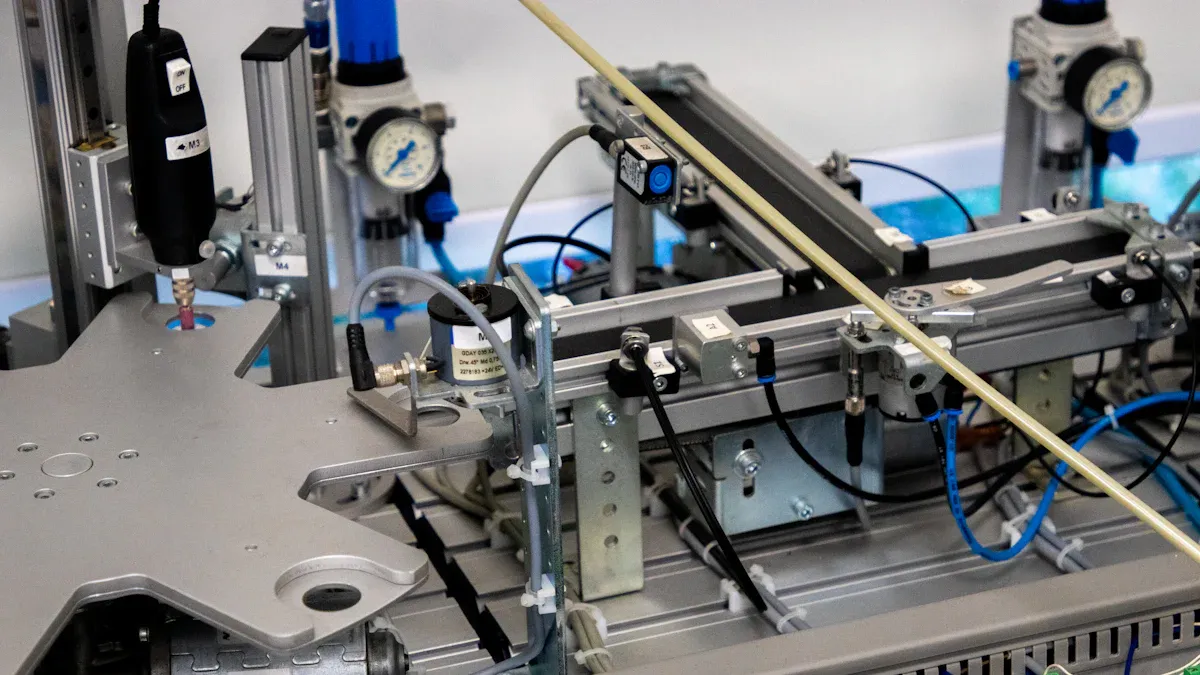
Carbon-based susceptors drive change in industrial processes. Engineers report higher efficiency and better product quality. Many companies see lower energy use and improved control. These materials help manage heat more effectively. Industry leaders choose carbon-based susceptors for sustainable manufacturing.
Key Takeaways
- Carbon-based susceptors improve industrial heating by providing fast, even heat that boosts efficiency and product quality.
- These materials last longer and resist damage, reducing maintenance costs and downtime in manufacturing processes.
- Using carbon-based susceptors supports greener production by lowering energy use and emissions, helping companies meet environmental goals.
What Are Carbon-Based Susceptors?
Definition and Function
Carbon-based susceptors serve as specialized materials that absorb electromagnetic energy and convert it into heat. Engineers use these materials in processes that require precise temperature control. The susceptor sits within a heating system, such as a microwave or induction furnace. When exposed to electromagnetic fields, the susceptor heats up quickly and transfers this energy to the surrounding material. This process allows for rapid and uniform heating. Many industries rely on this technology to improve efficiency and product quality.
Note: Carbon-based susceptors often replace traditional metal components in high-temperature environments. Their unique properties make them suitable for advanced manufacturing applications.
Key Material Properties
Several properties make carbon-based susceptors valuable in industrial settings:
- High Thermal Conductivity: These materials transfer heat efficiently, ensuring even temperature distribution.
- Chemical Stability: Carbon-based susceptors resist corrosion and chemical reactions at elevated temperatures.
- Mechanical Strength: They maintain structural integrity under thermal stress.
- Low Density: Their lightweight nature reduces the overall mass of heating systems.
- Customizability: Manufacturers can tailor the shape and size to fit specific equipment.
The combination of these properties supports reliable and consistent performance. Industries select carbon-based susceptors to achieve better thermal management and longer equipment lifespans.
Types of Carbon-Based Susceptors
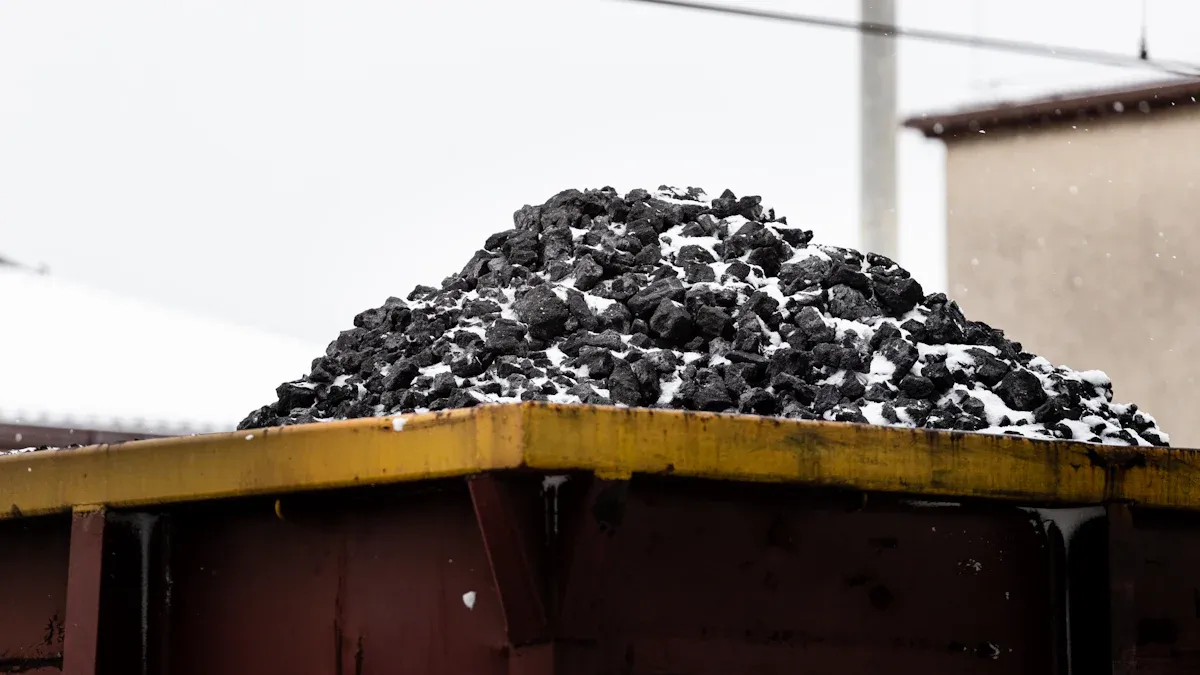
Graphite Susceptors
Graphite susceptors play a key role in many high-temperature processes. They offer excellent thermal conductivity and can withstand extreme heat. Many engineers choose graphite because it resists chemical attack and keeps its shape under stress. Industries use graphite susceptors in applications like semiconductor manufacturing and metal processing. These susceptors often last longer than metal alternatives.
Carbon Fiber Susceptors
Carbon fiber susceptors combine strength with low weight. They heat up quickly and cool down fast. This property helps operators control temperature with precision. Carbon fiber also resists cracking and breaking. Many companies use these susceptors in advanced composites and aerospace parts. The unique structure of carbon fiber allows for custom designs.
Composite Carbon Susceptors
Composite carbon susceptors blend different carbon materials to improve performance. Manufacturers mix graphite, carbon fiber, or other forms to create a tailored product. These composites balance strength, conductivity, and durability. Many industries select composite carbon susceptors for specialized heating systems. The flexibility in design supports a wide range of industrial needs.
SiC-Coated Graphite Susceptors
SiC-coated graphite susceptors feature a layer of silicon carbide over graphite. This coating protects the susceptor from oxidation and chemical wear. The combination increases lifespan and maintains high thermal efficiency. Many semiconductor and electronics companies rely on SiC-coated graphite for clean, stable heating. These products show how carbon-based susceptors continue to advance industrial technology.
Tip: Choosing the right type of susceptor depends on the specific process and environment.
Comparative Advantages Across Industries
Thermal Efficiency
Carbon-based susceptors deliver high thermal efficiency in many industrial settings. These materials heat up quickly and distribute energy evenly. Engineers notice that processes using carbon-based susceptors reach target temperatures faster. This rapid response reduces energy waste. Many factories report lower operating costs because of this efficiency.
Note: Uniform heating helps prevent product defects and improves overall quality.
Durability and Longevity
Industries value the long service life of carbon-based susceptors. These materials resist wear from high temperatures and harsh chemicals. Graphite and composite susceptors keep their shape and strength after repeated use. Companies often see fewer equipment failures and less downtime. This reliability leads to lower maintenance costs and longer intervals between replacements.
- Carbon-based susceptors withstand thermal cycling.
- They resist corrosion better than many metals.
- Their structure remains stable under stress.
Environmental Impact
Carbon-based susceptors support greener manufacturing. Many companies choose these materials to reduce their carbon footprint. Lower energy consumption means fewer greenhouse gas emissions. Some carbon-based susceptors come from recycled sources, which further supports sustainability goals.
| Advantage | Environmental Benefit |
|---|---|
| High efficiency | Less energy used |
| Long lifespan | Fewer replacements needed |
| Recyclable materials | Reduced waste |
Engineers see these benefits as essential for meeting modern environmental standards. Carbon-based susceptors help industries balance productivity with responsibility.
Case Studies by Industry
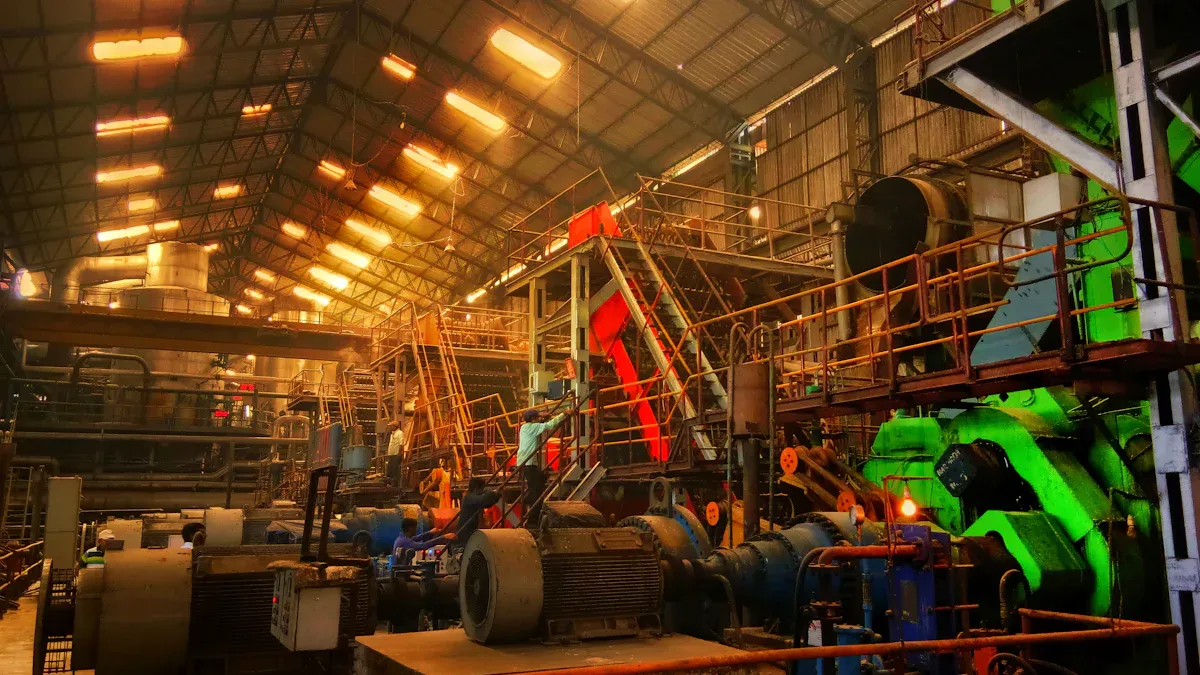
Semiconductor Manufacturing with SiC-Coated Graphite Susceptors
SiC-coated graphite susceptors play a vital role in semiconductor manufacturing. Companies use these susceptors in processes like chemical vapor deposition (CVD). The SiC coating protects the graphite from oxidation. This protection allows the susceptor to last longer and maintain stable performance. Engineers report that these susceptors provide uniform heating. Uniform heating helps create high-quality semiconductor wafers. Factories see fewer defects and higher yields. Many manufacturers choose SiC-coated graphite because it supports cleanroom standards and reduces contamination risks.
Note: Consistent temperature control is essential for producing advanced microchips.
Biomass Processing Using Carbon-Based Susceptors in Microwave-Assisted Pyrolysis
Biomass processing plants use carbon-based susceptors in microwave-assisted pyrolysis. These susceptors absorb microwave energy and convert it into heat. The heat breaks down organic material into bio-oil, gas, and char. Operators find that carbon-based susceptors speed up the reaction. Faster reactions mean higher throughput and lower energy costs. Plants also report better control over product quality. The use of these susceptors supports the production of renewable fuels and chemicals.
- Plants achieve higher efficiency.
- Operators reduce waste and emissions.
- The process supports sustainable energy goals.
Waste Treatment and Recycling with Carbonaceous RF Susceptors
Waste treatment facilities use carbonaceous RF susceptors to improve recycling processes. These susceptors work with radio frequency (RF) heating systems. The system heats waste materials quickly and evenly. This method helps break down plastics, rubber, and other tough materials. Facilities report lower energy use and faster processing times. The technology also reduces harmful emissions. Many cities use this approach to manage waste more responsibly.
| Benefit | Impact on Waste Treatment |
|---|---|
| Faster heating | Shorter processing cycles |
| Lower energy use | Reduced operational costs |
| Cleaner emissions | Improved environmental safety |
Advanced Ceramics Production Using Graphite and Composite Susceptors
Ceramics manufacturers rely on graphite and composite susceptors for advanced production. These susceptors provide stable and even heating in kilns and furnaces. The materials withstand high temperatures and resist chemical attack. Factories produce ceramics with fewer cracks and defects. The result is stronger and more reliable products. Many companies use these susceptors to make parts for electronics, aerospace, and medical devices.
Tip: Choosing the right susceptor material can improve both product quality and production speed.
Carbon-Based Susceptors in Green Carbon Capture Technologies
Green carbon capture technologies use carbon-based susceptors to enhance performance. These susceptors help heat reactors that capture carbon dioxide from industrial gases. The materials allow for precise temperature control. This control improves the efficiency of carbon capture and reduces energy use. Companies working on climate solutions value these benefits. The use of carbon-based susceptors supports efforts to lower greenhouse gas emissions and fight climate change.
Practical Considerations for Implementation
Selection Criteria
Engineers select susceptors based on several important factors. They consider the operating temperature range, chemical environment, and required lifespan. The size and shape of the susceptor must fit the equipment. Cost also plays a role in the decision. Many teams compare the thermal conductivity and mechanical strength of different materials. They look for options that offer reliable performance and easy maintenance.
Key selection criteria include:
- Maximum operating temperature
- Resistance to corrosion or oxidation
- Mechanical durability
- Compatibility with process equipment
- Total cost of ownership
Integration Challenges
Companies often face challenges when adding new susceptors to existing systems. Equipment may need modifications to fit the new material. Some processes require changes in heating profiles or control systems. Operators must learn new procedures for handling and maintenance. In some cases, the supply chain for advanced materials can cause delays.
Tip: Early planning and pilot testing help reduce integration risks.
Expert Recommendations
Industry experts suggest a step-by-step approach for successful implementation. They recommend starting with small-scale trials. Teams should monitor performance and collect data. Feedback from operators helps identify issues early. Experts also advise working closely with suppliers to ensure quality and support.
| Step | Action |
|---|---|
| 1 | Conduct pilot tests |
| 2 | Train staff |
| 3 | Monitor and adjust processes |
| 4 | Review supplier partnerships |
Carbon-Based Susceptors offer strong benefits, but careful planning ensures the best results.
Case studies show that Carbon-Based Susceptors improve efficiency, product quality, and sustainability in many industries. These materials support innovation and help companies reach new goals.
Experts recommend ongoing evaluation to unlock more value from Carbon-Based Susceptors in advanced manufacturing.
FAQ
What industries benefit most from carbon-based susceptors?
Semiconductor, ceramics, waste treatment, and biomass processing industries see the greatest benefits. These sectors report improved efficiency, better product quality, and lower energy costs.
How do carbon-based susceptors improve sustainability?
These susceptors reduce energy use and emissions. Many manufacturers use recycled materials. Companies achieve greener operations and meet stricter environmental standards.
Are carbon-based susceptors difficult to maintain?
Most operators find maintenance straightforward. These materials resist corrosion and wear. Regular inspections help ensure long service life and reliable performance.


